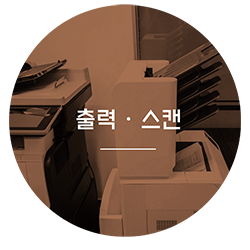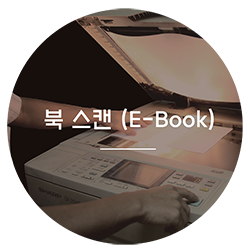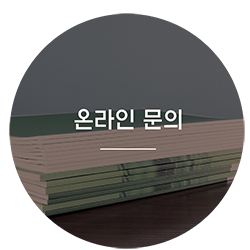Title: Enhancing Memory in Seniors: Exploring Memory-Boosting Therapie…
페이지 정보

본문
Practical Tips for Implementing Memory Loss Therapies:
1. Consult with a healthcare professional to determine the most suitable memory loss therapy for your loved one.
2. Create a consistent routine for engaging seniors in therapy sessions to establish a sense of familiarity and comfort.
3. Stay patient and supportive during therapy sessions, allowing seniors to progress at their own pace.
4. Encourage social interaction and participation in group activities to promote cognitive stimulation and emotional wellness.
3. Physical Exercise and Healthy Lifestyle:
Regular physical exercise plays a crucial role in maintaining cognitive health and reducing the risk of memory loss in seniors. Exercise promotes blood flow to the brain, stimulates the growth of new brain cells, and enhances overall brain function. Additionally, adopting a healthy lifestyle, including a balanced diet, regular sleep patterns, and stress management techniques, can significantly impact memory and cognitive function.
3. Music Therapy:
Music therapy has been shown to have profound benefits for seniors with memory loss. Listening to familiar songs, playing instruments, and engaging in music activities can evoke positive emotions, reduce anxiety, and stimulate memory recall. Caregivers can incorporate music into seniors' daily routines to promote relaxation and cognitive function.
Introduction:
As we age, it is common for memory to decline. However, there are several memory-boosting therapies that can help seniors maintain and NY even enhance their cognitive function. These therapies are not only beneficial for seniors but can also improve their overall quality of life. In this article, we will explore some effective memory-boosting therapies tailored towards senior care, along with practical tips and real-world examples to help seniors and their caregivers make informed decisions.
By incorporating visually engaging activities and environments, caregivers can help improve cognitive function, reduce agitation, and enhance overall quality of life for individuals living with dementia. In this article, we will explore the benefits of visual stimulation for dementia patients, provide practical tips for implementing visual activities, and share real-world examples of successful strategies in senior care facilities.
In conclusion, visual stimulation is a powerful tool for enhancing the well-being of dementia patients in senior care settings. By incorporating visually engaging activities, environments, and strategies, caregivers can help improve cognitive function, reduce agitation, and enhance overall quality of life for individuals living with dementia. From creating visual spaces to engaging in art therapy and utilizing technology, there are endless possibilities for incorporating visual stimulation into senior care programs. By prioritizing visual engagement, caregivers can make a positive impact on the lives of residents with dementia and create a more enriching and supportive environment for all.
3. Multi-Sensory Experience:
Enhance the music therapy experience by incorporating visual elements like photos or videos that correlate with the songs being played. This multi-sensory approach can further stimulate memories and engagement.
3. **Virtual Reality Therapy**: Some senior care facilities have introduced virtual reality therapy for residents with dementia, providing immersive visual experiences that transport them to different places and time periods. This technology has proven to be a valuable tool for stimulating cognitive function and reducing agitation.
Practical tip: Caregivers can create memory boxes filled with sentimental items, photographs, and mementos that can spark conversations and trigger memories during reminiscence therapy sessions with seniors.
2. Interactive Music Sessions:
Organize interactive music sessions where seniors can participate by playing simple instruments, clapping along, or singing. This fosters a sense of accomplishment and joy.
Conclusion:
Memory-boosting therapies tailored for senior care encompass a variety of approaches, from cognitive stimulation and reminiscence therapy to physical exercise and healthy lifestyle choices. By incorporating these therapies into daily routines, seniors can enhance their memory, cognitive function, and overall well-being. Caregivers and senior care providers play a crucial role in implementing these strategies effectively and creating a supportive environment for seniors to thrive mentally and emotionally. Remember, a proactive approach to memory care can lead to a fulfilling and enriched life for seniors in their golden years.
1. Cognitive Stimulation Therapy (CST):
CST involves engaging seniors in activities that stimulate their cognitive functions. This therapy focuses on enhancing memory, attention, and problem-solving skills through group sessions led by trained professionals. Activities may include puzzles, memory games, storytelling, and discussions on various topics. CST not only boosts memory but also promotes social interaction and emotional well-being among seniors.
1. Consult with a healthcare professional to determine the most suitable memory loss therapy for your loved one.
2. Create a consistent routine for engaging seniors in therapy sessions to establish a sense of familiarity and comfort.
3. Stay patient and supportive during therapy sessions, allowing seniors to progress at their own pace.
4. Encourage social interaction and participation in group activities to promote cognitive stimulation and emotional wellness.
3. Physical Exercise and Healthy Lifestyle:
Regular physical exercise plays a crucial role in maintaining cognitive health and reducing the risk of memory loss in seniors. Exercise promotes blood flow to the brain, stimulates the growth of new brain cells, and enhances overall brain function. Additionally, adopting a healthy lifestyle, including a balanced diet, regular sleep patterns, and stress management techniques, can significantly impact memory and cognitive function.
3. Music Therapy:
Music therapy has been shown to have profound benefits for seniors with memory loss. Listening to familiar songs, playing instruments, and engaging in music activities can evoke positive emotions, reduce anxiety, and stimulate memory recall. Caregivers can incorporate music into seniors' daily routines to promote relaxation and cognitive function.
Introduction:
As we age, it is common for memory to decline. However, there are several memory-boosting therapies that can help seniors maintain and NY even enhance their cognitive function. These therapies are not only beneficial for seniors but can also improve their overall quality of life. In this article, we will explore some effective memory-boosting therapies tailored towards senior care, along with practical tips and real-world examples to help seniors and their caregivers make informed decisions.
By incorporating visually engaging activities and environments, caregivers can help improve cognitive function, reduce agitation, and enhance overall quality of life for individuals living with dementia. In this article, we will explore the benefits of visual stimulation for dementia patients, provide practical tips for implementing visual activities, and share real-world examples of successful strategies in senior care facilities.
In conclusion, visual stimulation is a powerful tool for enhancing the well-being of dementia patients in senior care settings. By incorporating visually engaging activities, environments, and strategies, caregivers can help improve cognitive function, reduce agitation, and enhance overall quality of life for individuals living with dementia. From creating visual spaces to engaging in art therapy and utilizing technology, there are endless possibilities for incorporating visual stimulation into senior care programs. By prioritizing visual engagement, caregivers can make a positive impact on the lives of residents with dementia and create a more enriching and supportive environment for all.
3. Multi-Sensory Experience:
Enhance the music therapy experience by incorporating visual elements like photos or videos that correlate with the songs being played. This multi-sensory approach can further stimulate memories and engagement.
3. **Virtual Reality Therapy**: Some senior care facilities have introduced virtual reality therapy for residents with dementia, providing immersive visual experiences that transport them to different places and time periods. This technology has proven to be a valuable tool for stimulating cognitive function and reducing agitation.
Practical tip: Caregivers can create memory boxes filled with sentimental items, photographs, and mementos that can spark conversations and trigger memories during reminiscence therapy sessions with seniors.
2. Interactive Music Sessions:
Organize interactive music sessions where seniors can participate by playing simple instruments, clapping along, or singing. This fosters a sense of accomplishment and joy.
Conclusion:
Memory-boosting therapies tailored for senior care encompass a variety of approaches, from cognitive stimulation and reminiscence therapy to physical exercise and healthy lifestyle choices. By incorporating these therapies into daily routines, seniors can enhance their memory, cognitive function, and overall well-being. Caregivers and senior care providers play a crucial role in implementing these strategies effectively and creating a supportive environment for seniors to thrive mentally and emotionally. Remember, a proactive approach to memory care can lead to a fulfilling and enriched life for seniors in their golden years.
1. Cognitive Stimulation Therapy (CST):
CST involves engaging seniors in activities that stimulate their cognitive functions. This therapy focuses on enhancing memory, attention, and problem-solving skills through group sessions led by trained professionals. Activities may include puzzles, memory games, storytelling, and discussions on various topics. CST not only boosts memory but also promotes social interaction and emotional well-being among seniors.
- 이전글Poker Tournament Tips 24.11.25
- 다음글Dance Club 24.11.25
댓글목록
등록된 댓글이 없습니다.









